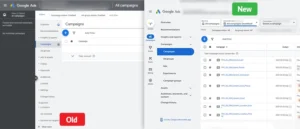Introduction
Programmatic advertising has become a dominant force in marketing, transforming how brands connect with their target audiences. While it has seen considerable success in mature markets, its influence is spreading rapidly in emerging markets. This blog post will explore the opportunities and challenges that programmatic advertising presents in these dynamic and diverse regions.
Opportunities in Emerging Markets
- Access to a Growing Audience: Emerging markets often have a rapidly expanding middle class with increasing disposable income. This provides a substantial audience for businesses to reach and engage with through programmatic advertising.
- Cost-Efficiency: Programmatic advertising allows for precise targeting, making ad spending more efficient. Marketers can reach potential customers with relevant content, reducing wasted resources.
- Data-Driven Decision-Making: Data is at the heart of programmatic advertising. Marketers in emerging markets can harness data analytics to understand consumer behavior and preferences, allowing for more effective campaign strategies.
- Mobile-First Markets: Many emerging markets are predominantly mobile-first, skipping the desktop phase. Programmatic advertising is well-suited for mobile campaigns, offering a direct line to consumers.
- Local and Global Reach: Programmatic advertising enables businesses to tailor their campaigns for local or global audiences, depending on their goals. This flexibility can help businesses expand beyond their borders.
Challenges in Emerging Markets
- Infrastructure Limitations: Some emerging markets may still have infrastructure challenges, leading to slow internet speeds or limited connectivity. This can affect the delivery and effectiveness of programmatic ads.
- Data Privacy and Regulations: Data privacy laws and regulations vary widely in emerging markets. Adhering to these rules while collecting and utilizing consumer data can be complex.
- Linguistic and Cultural Diversity: Emerging markets often have linguistic and cultural diversity. Advertisers must tailor their content to resonate with diverse audiences, which can be a significant challenge.
- Ad Blocking: Ad-blocking software is becoming increasingly popular in emerging markets. Marketers must create non-intrusive, engaging content to circumvent these challenges.
- Competition: As programmatic advertising gains traction, competition in emerging markets grows. Marketers need to differentiate themselves to stand out and achieve their goals.
- Limited Access to Premium Inventory: High-quality ad inventory can be limited in emerging markets. Marketers need to work with local partners to secure the best ad space.
Conclusion
Programmatic advertising in emerging markets presents opportunities for businesses looking to expand their reach and connect with new audiences. However, it has unique challenges, from infrastructure limitations to data privacy concerns. To succeed, marketers must adapt, innovate, and collaborate with local partners to navigate the dynamic landscape of emerging markets. As technology and connectivity continue to advance in these regions, the role of programmatic advertising is set to grow, making it a key tool for businesses seeking growth and success.
To learn more or to acquire our services, please contact us at [email protected]





